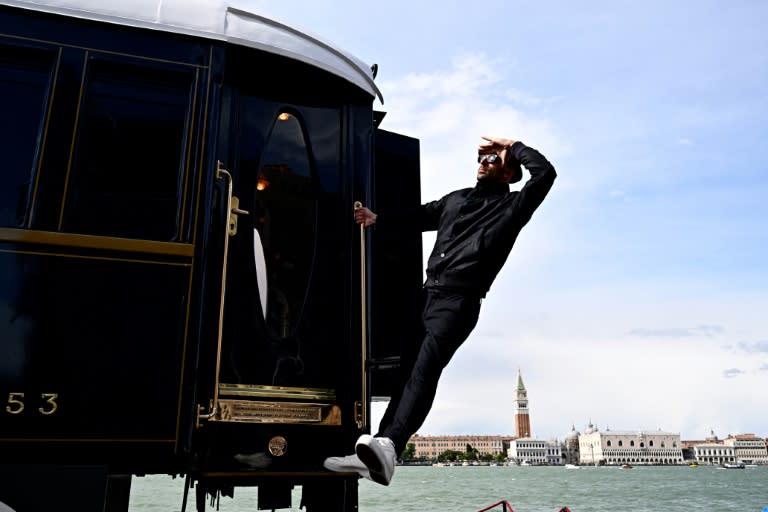French artist JR downsizes at Venice Biennale with Orient Express

Better known for his huge photographic collages, French artist JR presents a smaller scale project for the Venice Biennale this year that still aims to "change perspectives" -- this time through rail travel.
The 41-year-old, known for installing huge trompe l'oeil photographs on structures from the Louvre to the Pyramids, turned his hand to renovating an old carriage of the Venice Simplon-Orient-Express.
The midnight blue wagon, decked out in Art Deco style, will hit the tracks next year but for now has been installed on a barge in Venice lagoon as part of the 60th Biennale art exhibition.
JR admits it is a bit of a "crazy project" but he has long been fascinated by trains, dating back to his teenage years as a graffiti artist, where he took inspiration -- and plied his trade -- on the metro and suburban overland trains in Paris.
"It's one of the carriages that has had 1,000 lives," he told AFP. "When we collected it in Belgium, it was still burned and dented, it had been abandoned for a long time."
Peering through eye-shaped portholes, visitors catch a glimpse within of various references to JR's past work.
For JR, train travel is synonymous with freedom.
"When I was 16 or 17, cameras started to become digital. Photography was no longer a sport for the rich," he said.
"Then we democratised travel, we could travel for nothing by train or plane to another end of the world.
"I think I wouldn't have been an artist if I hadn't been born that year," he said of 1983.
He often addresses social issues, from women's rights to immigration or guns and gun crime and likes to actively involve communities in his work.
But the scale of his projects is not always easy to manage.
In November in Paris, a sound and light show at the Palais Garnier in front of 25,000 people was plagued by rain, security concerns and worries about technology.
He admitted that he and his team - who had transformed the site into a huge grotto -- didn't even know if they would pull it off: "But if it works, suddenly it's something that has never been done".
"That's still what I do today: travelling, exposing people to images, changing perspectives, but above all questioning," said the artist.
"I think that's the greatest strength of art."
cmk/ar/ams/ach

